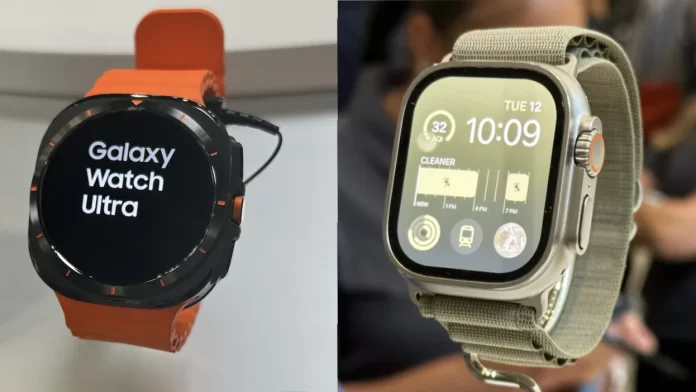Why Comparing the Samsung Galaxy Watch Ultra to the Apple Watch Ultra as Clones is a Misleading Fallacy
In the ever-evolving world of smartwatches, Samsung and Apple often stand at the forefront, pushing technological boundaries and setting industry standards. Among their latest offerings are the Samsung Galaxy Watch Ultra and the Apple Watch Ultra, both of which have garnered significant attention. Given their similar nomenclature and feature sets, some critics have hastily labeled the Galaxy Watch Ultra as a mere clone of the Apple Watch Ultra. However, this comparison is not only simplistic but also misleading. Here’s why equating the Galaxy Watch Ultra to an Apple Watch Ultra clone is a fallacious argument.
1. Distinct Design Philosophies
At first glance, the Samsung Galaxy Watch Ultra and the Apple Watch Ultra may appear similar, with both sporting robust designs tailored for rugged use. However, their design philosophies reflect the distinct identities of their respective brands. The Galaxy Watch Ultra features a more rugged aesthetic with a rotating bezel that enhances usability in harsh conditions, while the Apple Watch Ultra emphasizes a sleek yet sturdy design with a focus on integrated navigation and advanced health monitoring.
2. Different Operating Systems
One of the most critical distinctions between these two devices lies in their operating systems. The Galaxy Watch Ultra runs on Samsung’s Wear OS, which is built upon Google’s platform, offering a different set of applications and features compared to Apple’s watchOS, which powers the Apple Watch Ultra. The integration of Samsung’s ecosystem with Wear OS allows for unique functionalities and compatibility with a broader range of Android devices. On the other hand, the Apple Watch Ultra is optimized for seamless integration with iOS, offering features like deep integration with Apple Health and exclusive apps designed for Apple’s ecosystem.
3. Diverse Feature Sets
While both watches emphasize durability and advanced health tracking, their feature sets cater to different user needs. The Galaxy Watch Ultra offers a range of features such as a rotating bezel, advanced GPS tracking, and various sports modes that reflect Samsung’s focus on outdoor activities and precision. The Apple Watch Ultra, conversely, provides features like a depth gauge for underwater activities, a specialized action button, and tight integration with Apple’s suite of health and safety apps. These nuanced differences highlight that each watch is designed with distinct user experiences in mind.
4. Innovation and Market Strategy
Both Samsung and Apple have historically approached innovation from different angles. Samsung tends to incorporate features that push the boundaries of technology, such as advanced hardware components and unique interface elements. Apple, meanwhile, focuses on refining user experience and integration within its ecosystem. The Galaxy Watch Ultra and Apple Watch Ultra embody these strategies, with Samsung emphasizing ruggedness and Apple prioritizing a holistic user experience. Labeling one as a clone of the other disregards these fundamental differences in innovation strategies.
5. Brand Identity and Consumer Preferences
Finally, brand identity plays a significant role in the development and perception of these devices. Samsung and Apple have distinct brand philosophies that influence their product designs and features. Consumers choose between these watches not just for their technical specifications but also for the brand experience they offer. The characterization of one as a clone of the other overlooks the importance of these brand identities and consumer preferences.
Conclusion
The Samsung Galaxy Watch Ultra and the Apple Watch Ultra are products of their respective companies’ unique approaches to smartwatch technology. Labeling the Galaxy Watch Ultra as a clone of the Apple Watch Ultra is an oversimplification that fails to appreciate the nuanced differences in design, operating systems, features, innovation strategies, and brand identities. Each watch offers distinct advantages tailored to different user needs and preferences, reflecting the diverse landscape of wearable technology. Understanding these distinctions provides a clearer perspective on the value each device brings to the market, allowing consumers to make informed choices based on their individual requirements.
































